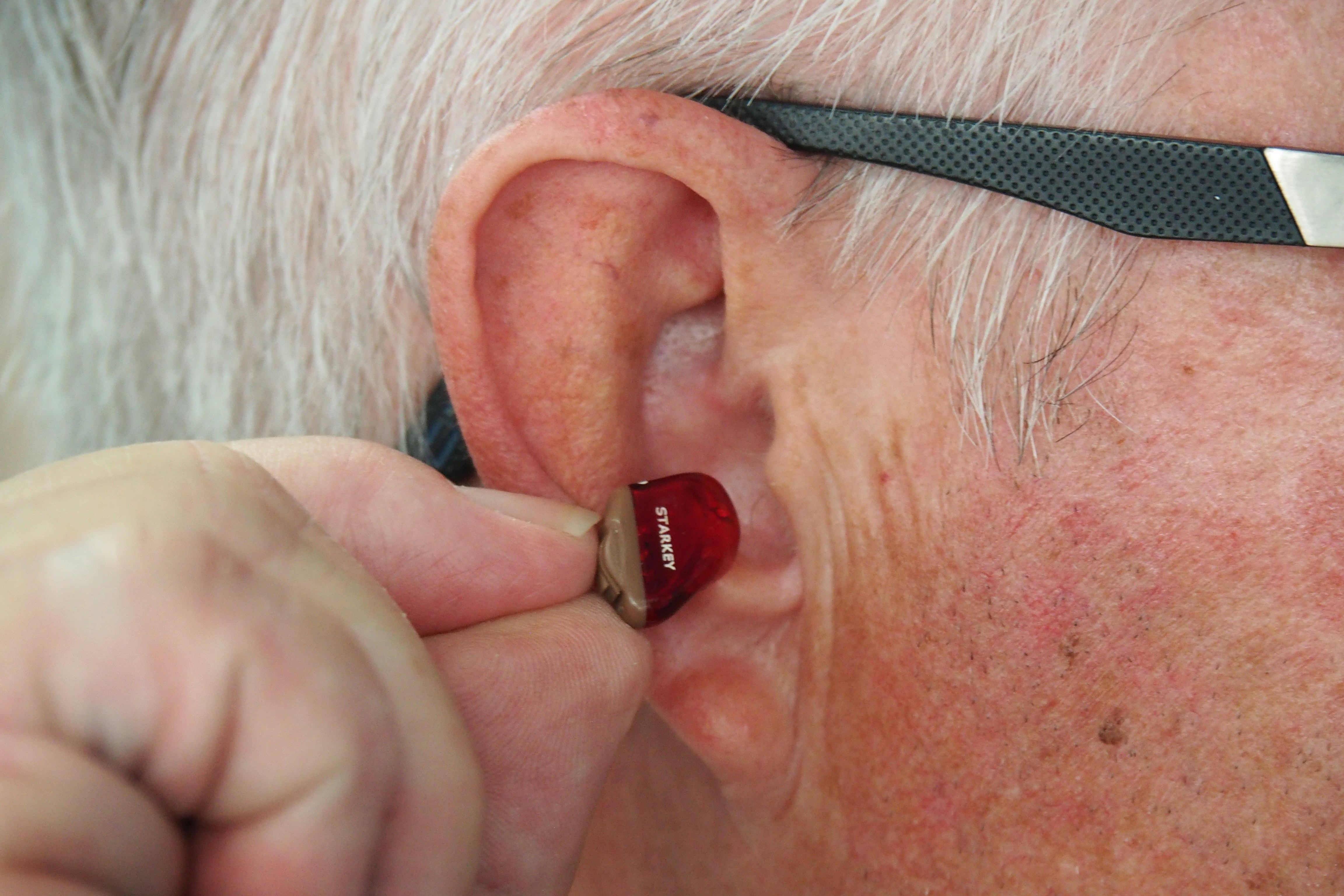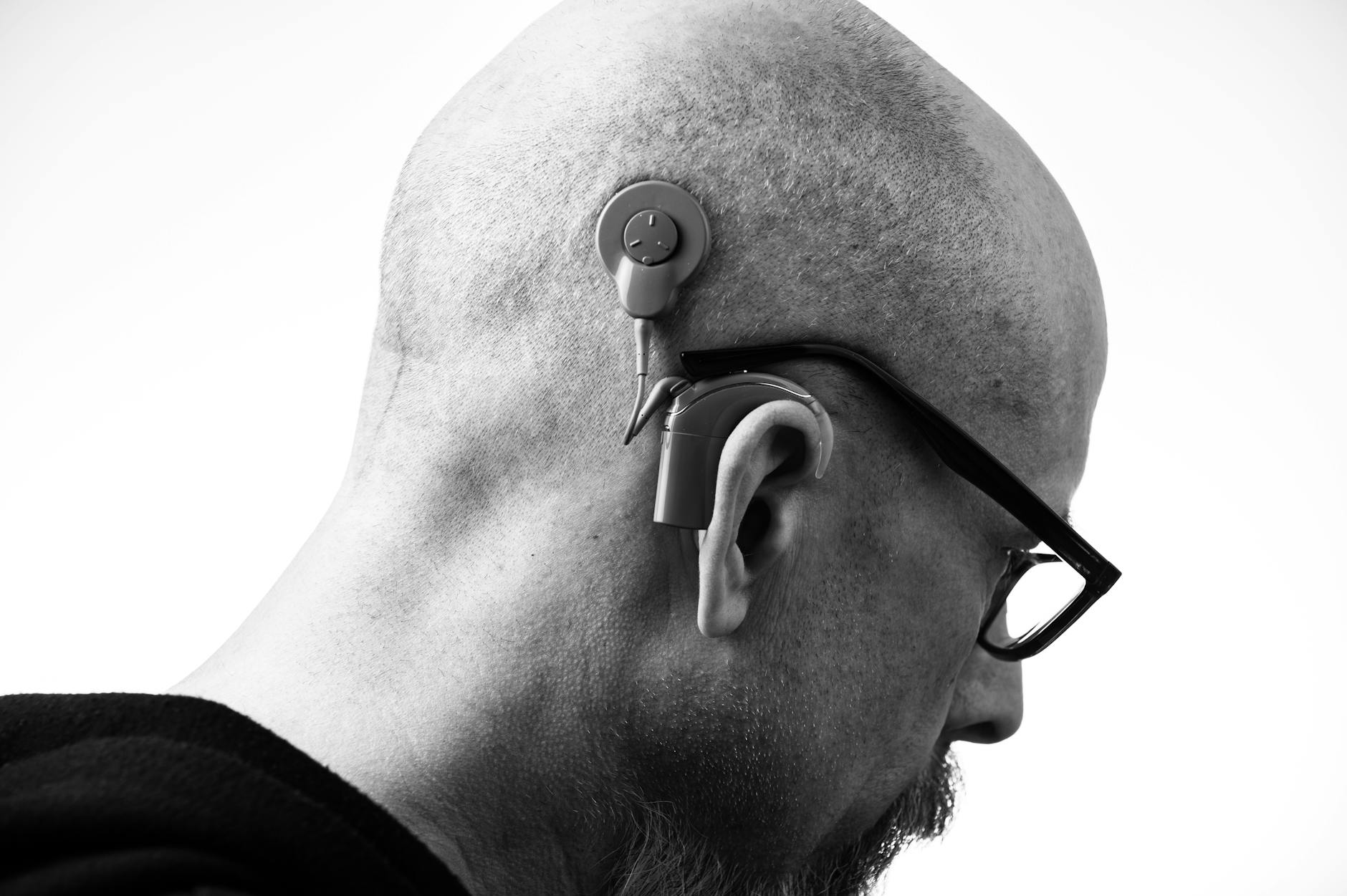Ever get home and feel like your brain ran a marathon—just from listening? That drained, foggy feeling isn’t in your head. Hearing loss makes your brain work harder to fill in missing sounds. The right hearing aids and a few smart tweaks can turn marathon listening into a manageable stroll.
What Is Listening Fatigue?
Listening fatigue is the mental and physical tiredness that builds when your brain has to work overtime to decode speech—especially in noise. When sound reaching the inner ear is degraded, the brain recruits extra attention and memory to guess at words, track multiple talkers, and stitch together context. Helpful in short bursts, exhausting over hours.
Common signs:
- Needing to nap after social time or meetings
- Jaw or temple tension from concentrating
- Feeling irritable or withdrawing from conversations
- Headaches or a “full” brain feeling by late afternoon
- More tinnitus or sound sensitivity when tired
Hearing aids can reduce effort by giving the brain a cleaner signal. But if the fit or settings aren’t right, they can also add to the load—harsh sound, too much background noise, or the wrong programs for your day can all sap energy.
How Hearing Aids Can Increase or Decrease Fatigue
Hearing aids don’t just make things louder. They shape sound in ways that either support easy listening—or make your brain work harder. Key factors:
- Amplification that matches your hearing profile: If soft speech isn’t audible, you strain. If louder sounds are too sharp, you flinch. The sweet spot lightens the brain’s workload.
- Compression speed and strength: Fast-acting compression can keep loud sounds comfortable but may pump and smear speech cues if too aggressive. Thoughtful settings protect comfort without blurring consonants.
- Noise reduction and directional microphones: These lift speech over background noise when tuned well. Too weak and you slog through the noise; too strong and speech can sound hollow or thin.
- Feedback control and wind management: Whistling and wind roar are fatiguing. Good control minimizes startle and irritation.
- Frequency lowering: Helpful if you’re missing high-pitched consonants, but if overdone it can make speech sound unnatural. Balance matters.
Settings That Help You Last the Day
Work with your audiologist to craft a setup that fits your brain, not just your audiogram. Consider these levers:
1) Nail the basics: comfort, clarity, and consistency
- Physical fit: Domes or earmolds should seal comfortably without pressure points. A poor seal shifts sound and forces higher volume, both of which increase fatigue.
- Acoustic verification: Ask for objective verification (like real-ear measurements) to confirm you’re getting audibility for soft speech and comfort for loud sounds. It’s the foundation for easier listening.
- Adaptation period: New users benefit from step-up gain—letting your brain acclimate over a few weeks. It’s normal to feel more tired at first as your brain relearns speech cues.
2) Build programs for your real life
- Quiet conversation: Aim for natural, full-bodied sound with minimal noise reduction so speech stays rich and relaxed.
- Restaurants and groups: Use stronger noise reduction with adaptive directional microphones. Enable a “speech focus” or “front focus” program you can tap quickly.
- Car commuting: Prioritize directional focus toward the passenger side or front, and moderate noise reduction to tame road noise without flattening speech.
- Outdoors: Turn on wind management. If wind is frequent, consider mic covers or behind-the-head clothing that shields mics.
3) Use noise reduction wisely
- Moderate is often best. Too little and you’re drowning in clatter. Too much and voices get hollow or delayed.
- Target steady noise (HVAC, engines) with stronger settings; keep speech-shaped noise reduction gentler so consonants stay crisp.
4) Let directional microphones carry you in noise
- Try adaptive directional modes that lock onto the talker in front of you. In circles or rotating conversations, consider a deeper “speech focus” setting you can toggle on demand.
- In quiet, switch back to omnidirectional so the world sounds open and relaxed.
5) Tame harshness and sudden sounds
- Ask your audiologist to adjust compression kneepoints and recruitment management so clangs and clatter don’t set off your startle reflex.
- Enable impulse noise control (for dishes, keyboard clicks) if available.
6) Clarify consonants without overcooking
- High-frequency emphasis helps with S, F, TH—critical for understanding. If you find it shrill, narrow the bandwidth or use gentle frequency lowering rather than big boosts that tire you out.
- Ensure feedback control is stable so high-frequency gain doesn’t cause whistling.
7) Master your volume and remote controls
- Use your app or button to nudge volume, turn on speech focus, or switch programs in seconds—small changes early prevent fatigue later.
- Consider a remote microphone accessory for meetings and restaurants. It beams a talker’s voice straight to your aids, often cutting effort dramatically.
Habits and Assistive Tech That Lighten the Load
Technology works best with a few behavior tweaks. These small moves protect your energy all day:
- Positioning power: Sit with your back to a wall, put talkers in front of you, and avoid backlighting that hides faces. Angle away from espresso machines and speakers.
- Table rules: Choose smaller tables or break into pairs. Ask for one person to speak at a time in group updates.
- Soften the room: Fabrics, curtains, and carpet kill echo. At home, turn off TV/music when conversing.
- Use the tech in the room: If there’s a hearing loop, switch to your telecoil (often “T” or “MT”). In lecture halls, ask for assistive listening devices early.
- Stream wisely: For TV, use a TV transmitter or built-in streaming rather than room speakers. Direct sound equals lower effort.
- Caption everything you can: Live captions on phones, laptops, and TVs reduce strain in long meetings or webinars.
- Pace your brain: Schedule quiet breaks between high-effort blocks. Step outside, breathe, and let your ears rest for 3–5 minutes.
- Daily basics: Hydration, movement, and sleep bolster attention and memory—the same systems you tap for listening.
Work and Social Environments: Quick Layout Fixes
Small environmental changes pay huge dividends in listening ease:
- Restaurants: Ask for booth seating, corners, or patios away from speakers. Arrive early to choose a quieter table.
- Meetings: Use circular seating so you can see faces. Turn on captions and request microphones be used consistently.
- Open offices: Noise-masking or soft partitions help. Book huddle rooms for complex conversations.
- Community venues: Look for the hearing loop symbol and use telecoil mode; it feeds the microphone/PA directly to your aids, often slashing effort.
When Fatigue Signals a Fit Problem
Sometimes “tired” is really “misfit.” Reach out to your audiologist if you notice:
- Harsh, sharp sound or flinching at clatter
- Speech sounds thin or distant in noise
- Frequent feedback or whistling
- Ear discomfort, soreness, or headaches shortly after putting aids on
- Tinnitus spikes with certain programs
These are all tuneable. Don’t push through weeks of strain—small adjustments to gain, compression, venting, or programs can make a big difference.
Track Your Energy: A One‑Week Experiment
Bring data to your follow-up. For 7 days, jot down:
- Time and place of tough listening
- Who you were listening to (one voice, group, lecture)
- Your settings (program, volume, noise reduction)
- Fatigue score 0–10 before and after
- What helped (moving seats, captions, remote mic)
Patterns jump out fast. Your audiologist can build targeted programs from this log.
What to Expect: Realistic Wins
Hearing aids won’t erase fatigue, but most users can expect:
- Easier one‑to‑one conversations within days to weeks
- Better speech in moderate noise with the right program and positioning
- Less end‑of‑day drain after your brain adapts to consistent, clean input
There’s also growing evidence that treating hearing loss supports brain health over time. In a large NIH‑funded trial in older adults at higher risk of cognitive decline, hearing intervention (including hearing aids) helped protect cognition compared with a control group over three years. Translation: giving your brain a clearer signal may do more than ease fatigue—it may support long‑term thinking skills too.
If progress stalls or fatigue remains high, ask for a deeper check: are your devices powerful enough, are settings aligned to your audiogram and lifestyle, and would adding an accessory (like a remote microphone) be the unlock?
Safety Note: Don’t Fight Noise with Volume
It’s tempting to turn up the dial in loud places. But more volume doesn’t always mean more clarity—and high outputs can be unsafe. As a rule of thumb, long exposures around 85 dB and above can damage hearing over time. If you’re cranking volume in loud venues, that’s a sign to switch to a stronger noise program, move seats, or use a remote mic—not a sign to push louder.
When in doubt, take a brief listening break and reset.
When to See a Pro
Book a visit with an audiologist if:
- You’re more tired with hearing aids than without after the first few weeks
- You avoid social plans because of effort
- You notice sudden changes in hearing, new vertigo, or ear pain
Fitting and fine‑tuning are a process, not a one‑and‑done. The goal isn’t just louder—it’s easier. With the right settings and habits, your energy belongs to your life, not to listening.
Frequently Asked Questions
Why am I more tired with new hearing aids?
Your brain is relearning speech cues it hasn’t heard clearly in a while. That adaptation can feel like a workout during the first few weeks. If the fatigue is severe or doesn’t improve, ask your audiologist to check physical fit, reduce harshness, moderate high‑frequency gain, and confirm audibility with real‑ear measurements. A step‑up gain plan and tailored noise programs usually help.
Which hearing aid features reduce fatigue the most?
The biggest wins come from getting the basics right—comfortable fit, verified audibility for soft speech, and comfortable loudness. After that, adaptive directional microphones for noisy places, well‑tuned noise reduction (especially for steady background sounds), impulse noise control, and a remote microphone for meetings or restaurants typically lower effort the most.
Can tinnitus make listening fatigue worse?
Yes. Tinnitus adds a competing signal your brain tries to ignore, which increases effort. Well‑fit hearing aids can reduce tinnitus intrusiveness by improving environmental sound. Some devices include sound therapy options. If tinnitus spikes with certain programs or at day’s end, tell your audiologist—settings can be adjusted to soften harshness and support comfort.
Is a telecoil or Bluetooth better for reducing effort?
They do different jobs. A telecoil connects you directly to hearing loops in many theaters, places of worship, and service counters—often delivering very clear, low‑effort sound in big rooms. Bluetooth is great for direct phone and media streaming. If you spend time in looped venues or public meetings, having both can be ideal.


